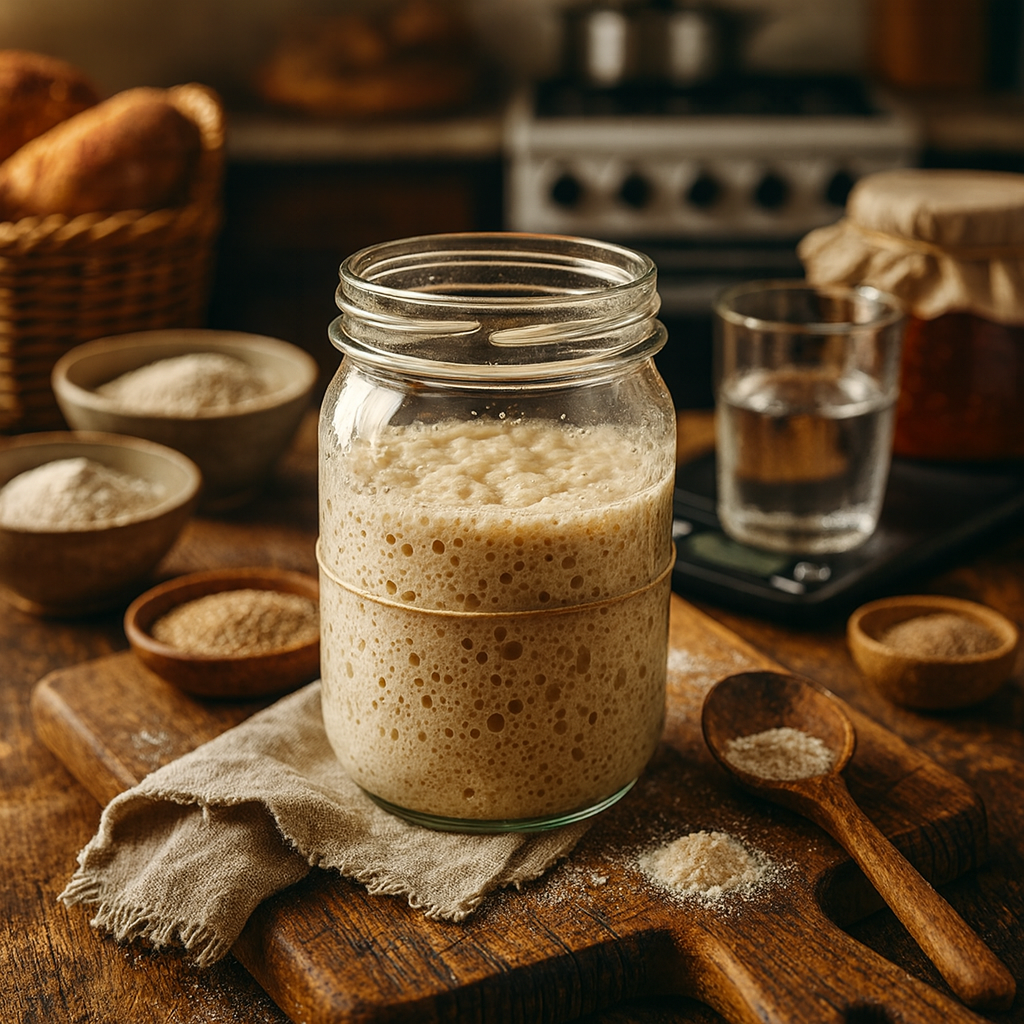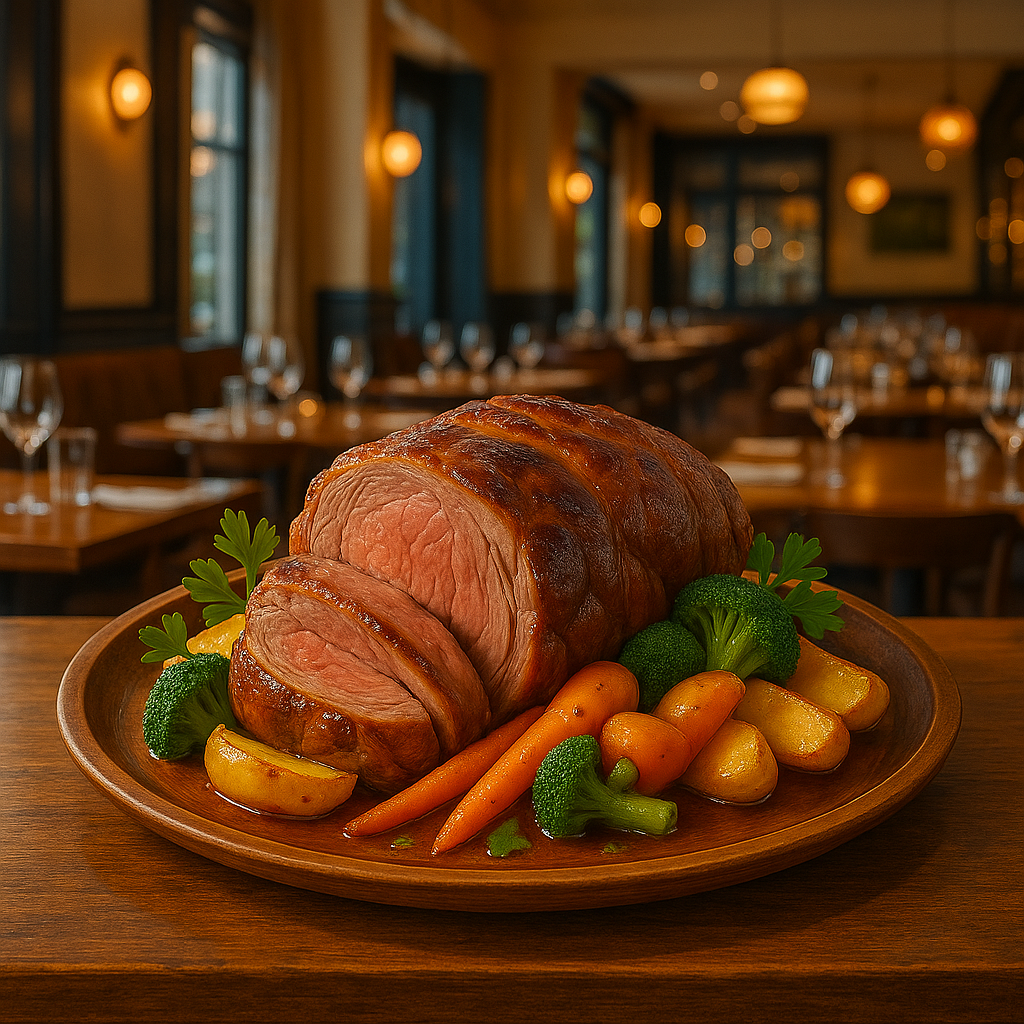Table of Contents
Introduction to New Zealand Cuisine
New Zealand’s cuisine is a flavorful tapestry woven from its rich cultural heritage, indigenous ingredients, and geographic diversity. The culinary landscape of this island nation is profoundly influenced by its indigenous Māori people, who have long utilized native resources and traditional cooking methods to create meals that are central to their cultural identity. The Māori method of cooking, known as “hangi,” involves steaming food in a pit oven, traditionally using heated stones, which imparts a unique flavor to meats and vegetables alike.
The geographical positioning of New Zealand, surrounded by ocean and characterized by mountains and fertile plains, further enhances its culinary offerings. The abundance of fresh produce, seafood, and livestock enables local chefs and home cooks to craft dishes that are not only delicious but also representative of the region’s natural bounty. The maritime climate provides for a variety of fruits, vegetables, and dairy products, which contribute significantly to the nation’s diverse food scene.
Furthermore, the influence of European settlers introduced a range of cooking techniques and ingredients that, when combined with Māori traditions, create a uniquely New Zealand culinary identity. This blending of cultures is evident in the way classic dishes are prepared and presented, marrying traditional elements with modern, innovative approaches. There are also significant contributions from Asian and Pacific Islander cuisines, which have helped shape contemporary dining experiences across the country.
As visitors venture into New Zealand’s vibrant food culture, they will find that its diversity reflects not only its geography and history but also the communal spirit of its people, who celebrate food as a form of connection and expression. This introduction serves as a foundation for exploring specific dishes that truly capture the essence of New Zealand’s culinary landscape.
Traditional Māori Dishes
The culinary landscape of New Zealand is significantly shaped by its indigenous Māori culture, which brings a rich array of traditional dishes that reflect a deep connection to the land and sea. One quintessential cooking method is Hāngī, a time-honored technique that involves cooking food in an underground oven. This method typically includes meats, vegetables, and fish, all of which are wrapped in leaves and placed on heated stones buried in a pit. The earth oven not only provides an even distribution of heat but also infuses the food with rich flavors that are unlike any surface cooking technique.

Central to Māori cuisine is the kūmara, or sweet potato, which holds a prominent place in both cultivation and diets. This versatile root vegetable is often roasted, mashed, or added to various dishes. Its natural sweetness and adaptability make it a beloved accompaniment to Hāngī and other traditional meals. Additionally, seafood plays a crucial role, with fish such as karengo (a type of edible seaweed) and various shellfish prominently featured in Māori fare, symbolizing the cultural ties to the ocean. The practice of fishing and gathering reflects the Māori principles of respect for nature and sustainability, vital aspects ingrained within their culture.
The foods of the Māori not only serve to nourish the body but also tell stories of ancestry and connection to the land. Sharing a Hāngī meal, for example, is a communal experience that fosters kinship and harmony, integral to Māori traditions. These culinary practices are interwoven with Māori identity and continuous cultural pride, illustrating how food transcends mere sustenance, evolving into a representation of heritage and community. Exploring traditional Māori dishes provides insights not only into the flavors of New Zealand but also into the profound cultural tapestry that these foods embody.
Seafood Delicacies
New Zealand is renowned for its rich marine environment, which produces a diverse array of seafood that is a cornerstone of the country’s culinary heritage. The abundance of coastal waters provides an ideal backdrop for an impressive variety of seafood delicacies that enhance both local dining experiences and the tourism industry. Among the most celebrated offerings are the green-lipped mussels, a species native to New Zealand, prized for their large size and vibrant green edges. Often steam-cooked and served with garlic and parsley, these mussels epitomize the fresh, flavorful nature of New Zealand’s coastal cuisine.
Another seafood highlight is the array of fresh fish available throughout the nation. Species such as snapper, kahawai, and hoki offer unique flavors and textures, making them favorites among both locals and visitors. Predominantly caught by sustainable fishing practices, these fish are typically grilled, baked, or transformed into fish and chips, a beloved dish that embodies New Zealand’s laid-back lifestyle and its deep connection to the sea. The preparation methods often reflect traditional Māori practices, showcasing the significance of seafood in their culture.
Additionally, the Māori-style kina, or sea urchin, stands as a unique gourmet experience. This delicacy is often enjoyed raw, where its creamy, rich flavor draws visitors eager to explore authentic New Zealand cuisine. As seafood is a vital part of New Zealand’s identity, restaurant menus frequently celebrate the freshness of local catches, allowing diners a true taste of the ocean’s bounty. The commitment to sustainable practices ensures that these marine resources will continue to thrive for generations to come, solidifying New Zealand’s reputation as a seafood lover’s paradise.
Lamb and Beef: The Meat of New Zealand
New Zealand is renowned for its exceptional quality lamb and beef products, a testament to the country’s rich agricultural heritage, particularly its sheep and cattle farming practices. The country’s pastoral landscape, characterized by lush, green pastures and favorable climate conditions, provides an ideal setting for raising livestock. This leads to meat that boasts superior flavor and tenderness, attributes that are highly sought after by consumers around the globe.

Sheep farming holds a significant place in New Zealand’s economy, with the nation being home to one of the largest sheep-to-person ratios in the world. The free-range grazing methods employed by farmers ensure that lambs are grass-fed, which results in the distinctive taste of New Zealand lamb—succulent, rich, and subtly earthy. Similarly, New Zealand’s beef, derived from cattle raised in expansive pastures, is renowned for its marbling and flavor, resulting from the animals’ natural diet of grass.
Traditional cooking methods play a crucial role in showcasing the quality of New Zealand meat. Roast lamb, often seasoned simply with rosemary and garlic, is a quintessential dish that exemplifies the best of New Zealand’s culinary offerings. Its preparation allows the inherent flavors of the lamb to shine through, making it a beloved choice for family gatherings and festive occasions. In addition to roast lamb, beef steaks prepared on the grill or barbecue are also popular; often marinated with local herbs and spices, these dishes highlight the robust flavors unique to New Zealand beef.
In summary, New Zealand’s lamb and beef are not just meals; they represent a way of life rooted in sustainable farming practices and respect for nature. Both types of meat continue to gain recognition on international stages, embodying the country’s commitment to quality and flavor that every visitor must experience while exploring New Zealand’s culinary landscape.
Sweet Treats and Desserts
New Zealand cuisine boasts a variety of delightful desserts that reflect the country’s rich cultural tapestry. Among these sweet treats, Pavlova stands out as a national favorite. This meringue-based dessert is distinguished by its crispy exterior and soft, marshmallow-like center, typically topped with a generous layer of whipped cream and fresh fruits such as kiwifruit, strawberries, and passionfruit. Pavlova is not only a culinary symbol but also a staple at festive occasions, from Christmas to birthday celebrations, further cementing its status in Kiwi cultural traditions.
Another beloved treat is the ANZAC biscuit, which holds significant historical value. Originally crafted to send to soldiers during World War I, these oat-based biscuits are made with simple ingredients like flour, sugar, coconut, and golden syrup. Their resilience—staying fresh during long journeys—made them a practical choice for wartime. Today, ANZAC biscuits are commonly baked during ANZAC Day commemorations, serving as a reminder of the sacrifices made by the New Zealand and Australian armed forces.

Additionally, Hokey Pokey ice cream is a quintessential New Zealand dessert that embodies the country’s love for sweet and creamy treats. This delectable ice cream, infused with a rich vanilla base and dotted with crunchy honeycomb toffee, is a popular choice among locals and visitors alike. Often enjoyed during warm summer months, Hokey Pokey not only satisfies sweet tooth cravings but also evokes a sense of nostalgia and shared experiences during family outings and social gatherings.
The cultural significance of these desserts extends beyond their flavors; they represent the connections and traditions inherent in New Zealand society. As such, indulging in these sweet treats offers visitors a unique glimpse into the nation’s culinary identity and heritage.
New Zealand Wine and Craft Beer
New Zealand has quickly established itself as a prominent player in the global wine and craft beer scene. Known for its diverse landscapes and favorable climate, the country is home to several acclaimed wine regions, with Marlborough and Central Otago leading the charge. Marlborough, located at the northern tip of the South Island, is world-renowned for its Sauvignon Blanc, which boasts vibrant acidity and lush fruit flavors. Along with Sauvignon Blanc, visitors should also try the region’s Pinot Noir, characterized by its silky texture and rich berry notes, making it an ideal companion for local game dishes.
Moving south to Central Otago, which is celebrated for its dramatic landscapes, the region is famous for producing exceptional Pinot Noir as well. The cool climate and varied terroirs contribute to a unique style that often features vibrant cherry and plum notes, complemented by earthy undertones. Wine enthusiasts should not overlook Central Otago’s other varietals, such as Sauvignon Blanc and aromatic whites like Riesling and Gewürztraminer, which also thrive in this region.

Complementing the burgeoning wine industry, New Zealand’s craft beer scene has also gained significant traction. Cities like Wellington and Auckland are hubs for craft breweries where innovative brewers experiment with local ingredients. Popular styles include hoppy IPAs, smooth porters, and refreshing lagers. For a true taste of New Zealand, one might pair a crisp Pale Ale with fresh fish and chips, or enjoy a rich stout with a hearty meat pie, showcasing the perfect marriage between locally brewed beverages and traditional cuisine.
As visitors explore New Zealand’s culinary landscape, indulging in its wine and craft beer offerings is an essential experience. The unique flavors and quality of these beverages not only enhance the enjoyment of New Zealand’s diverse dishes but also reflect the passion and dedication of local producers. Whether sipping on a glass of Marlborough Sauvignon Blanc or sampling a Central Otago craft beer, any visit to this breathtaking country would be incomplete without a taste of its exceptional beverages.
Cultural Fusion Foods
New Zealand boasts a vibrant culinary scene that is a direct reflection of its multicultural society. The nation has been shaped by various influences, resulting in an exciting fusion of flavors and techniques that define modern New Zealand cuisine. As cultures blend, traditional Māori culinary practices seamlessly intertwine with Asian, European, and Pacific Island flavors, creating a unique gastronomic experience. This dynamic fusion not only showcases the rich heritage of New Zealand but also celebrates the diverse population that thrives within its borders.
One of the most notable examples of fusion cuisine in New Zealand is the incorporation of traditional Māori ingredients, such as kumara (sweet potato) and various seafood, with Asian culinary styles. A dish that exemplifies this fusion is the ‘Kumara Salad’, where roasted kumara is tossed with Asian-inspired dressings, complemented by sesame seeds and greens. This dish reflects not only the local produce but also the influence of Asian cooking techniques, catering to varied palates.
Additionally, the British influence is evident in many hearty dishes that have been reimagined with local ingredients. Consider the popular ‘Kiwi pie’, which often features unique fillings such as venison or lamb, combined with sweet chutneys inspired by Indian cuisine. This prowess in blending flavors highlights New Zealand’s commitment to embracing its multicultural identity through culinary innovation.
Furthermore, New Zealand’s barbecuing tradition, inspired by Pacific Island customs, invites an array of cultural flavors to the grill. Dishes such as ‘hangi-style marinated meats’ served with Asian slaw are becoming increasingly popular, offering a delightful juxtaposition of textures and tastes. As visitors explore New Zealand’s culinary landscape, they are invited to experience these cultural fusion foods that perfectly encapsulate the melding of traditions, offering a glimpse into the country’s rich and diverse heritage.
Street Food and Markets
New Zealand’s street food culture is a vibrant tapestry that reflects the country’s rich culinary heritage and diverse influences. Urban areas such as Auckland, Wellington, and Christchurch boast a variety of local markets and food stalls that beckon both locals and tourists alike. These bustling hubs are not only feeders of delicious bites; they also offer a chance to experience the ambiance and essence of Kiwi life.
One of the must-visit markets is the Auckland Fish Market, a renowned establishment that takes pride in showcasing the freshest seafood. Visitors can indulge in iconic dishes such as fish tacos or a traditional whitebait fritter, giving them a taste of the coastal bounty. Additionally, Wellington’s Night Market has become a staple of the city’s culinary scene, featuring an impressive array of international bites and local delicacies. It is a gathering place for food lovers to explore flavors from various cultures, all while enjoying the lively atmosphere that only a market can provide.
Another highlight is the Christchurch’s Riverside Market, which draws visitors with its artisanal offerings and farm-fresh produce. Popular among locals for its gourmet street food options, visitors can relish gourmet burgers, Asian-inspired dishes, or delicious sweet treats, ensuring that there is something for everyone. Street food vendors play an integral role in these markets, often using locally sourced ingredients to create dishes that reflect the land’s natural flavors.
In summary, New Zealand’s street food and market scene offers a unique culinary experience that captures the essence of the country’s diverse culture and fresh ingredients. Visitors should not miss the chance to explore these vibrant venues to fully appreciate the local flavors and culinary craftsmanship on display.
Conclusion: A Culinary Adventure Awaits
New Zealand’s culinary landscape is as diverse and rich as its breathtaking scenery. With a strong emphasis on fresh, local ingredients, the food culture of this island nation offers an array of flavors and experiences that should not be missed. From seafood caught in the crisp ocean waters to lamb raised in lush pastures, every bite reflects the nation’s deep connection to its land and its heritage. Visitors to New Zealand are encouraged to embrace this culinary adventure, exploring the multitude of options available.
Whether opting for an upscale dining experience in one of the country’s acclaimed restaurants or indulging in the vibrant street food scene, every culinary choice has a story to tell. Traditional Māori cuisine, for example, exemplifies the nation’s cultural history, while contemporary chefs pay homage to these roots by incorporating modern techniques and innovative presentations. Therefore, every meal in New Zealand is a revelation, merging history with avant-garde styles and diverse flavors.
Additionally, regional specialties make each part of New Zealand unique. The wine regions offer exquisite pairings with local dishes, enhancing the taste experience and showcasing the agricultural prowess of the nation. However, the culinary exploration does not stop at meals when opportunities such as food festivals and farmers’ markets allow for deeper engagement with local producers and artisans.
Ultimately, New Zealand’s culinary journey invites everyone to dive into its vibrant food scene. By engaging with the local cuisine, visitors not only satiate their appetites but also gain insight into the culture and identity of the people. Thus, embarking on this culinary adventure enriches the travel experience, making it an essential part of any visit to New Zealand.





